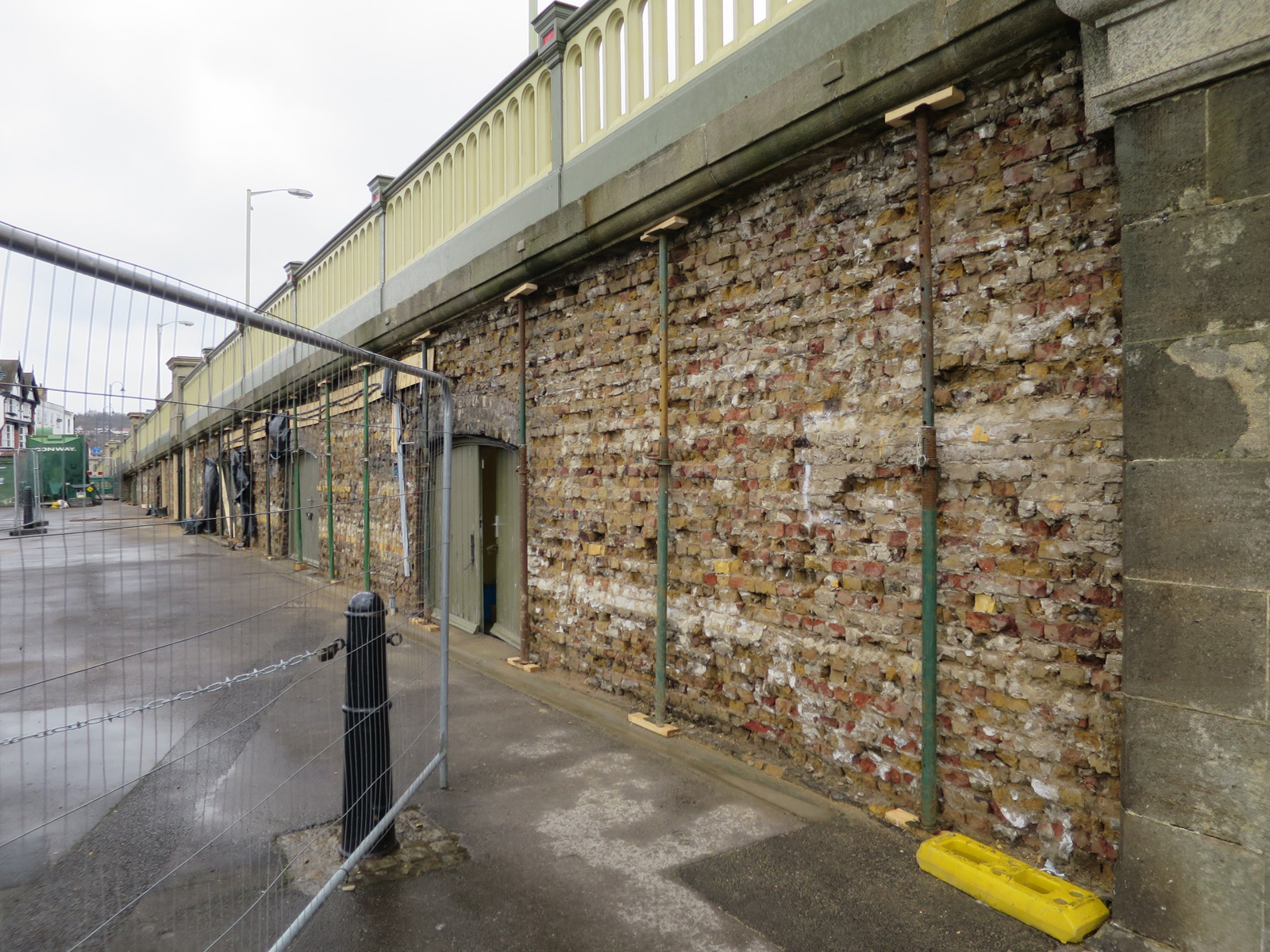As passers-by will know, the facing wall at the Strood end of the bridge has now been taken down. As would be expected with any restoration work, it’s revealed a few surprises.
Pre-work trials had suggested the hidden brickwork was in good condition and supported the parapet above, but the keen observer will note temporary props are now in place to support this. There was never a danger to the public, but despite all previous evidence it was found the parapet had been supported by the now removed façade – rather than the hidden brickwork.
In addition to these props we have installed mortar ‘tell-tales’. These are simple patches placed across the joints in the stone parapets. Should any movement (of a magnitude undetectable visibly) occur, the patches will crack.
The wall itself, which dates from the 1850s when the Victorian bridge was constructed, is also rather unsightly, with the hidden – or carcassing – brickwork now revealed to be in a variable condition, including what can only be described as some “interesting” repairs. This is the reason parts of the wall are now protected by black plastic sheeting.
Repairs to the brickwork are now being progressed to ensure the integrity of the structure for generations to come. Areas of poor brickwork are being removed and repaired with both modern and reclaimed bricks – this wall will eventually be hidden from view by a new façade with specially selected bricks.
One further discovery includes a four-way ceramic duct near the steps. The Chatham & District Light Railways Company operated an electric tram over both the 1856 and 1914 versions of the bridge and it is thought this duct may be the last reminder of that system.







